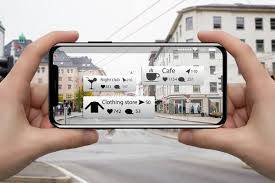A breakthrough in augmented reality arrives with the development of flexible, transparent displays. 3D printing and innovative polymers pave the way for sleeker, user-friendly wearable devices, fostering the growth of the Metaverse and opening avenues in education and healthcare. In education, AR displays could enable interactive and engaging learning experiences, while in healthcare, AR displays could be used in medical training. Get ready for a future where your reality might be more augmented than your Instagram photos.
Introduction
• Define augmented reality (AR) and its evolution from science fiction to practical applications.
• Importance of AR in transforming how we interact with the digital and physical worlds.
1. Understanding Augmented Reality
• Definition and basic principles of AR technology.
• Contrasting AR with virtual reality (VR) and mixed reality (MR).
2. Applications of Augmented Reality
• Consumer Applications:
• AR in gaming and entertainment (e.g., Pokémon GO).
• Augmented shopping experiences and virtual try-ons.
• Enterprise Applications:
• AR in training and education (e.g., medical simulations, industrial training).
• Use cases in architecture, engineering, and construction (AEC).
3. Technological Foundations
• Hardware:
• Evolution of AR devices (e.g., smart glasses, headsets).
• Advances in display technologies and sensors.
• Software:
• Development platforms and tools for creating AR experiences.
• Integration of AI and computer vision in AR applications.
4. Impact of Augmented Reality
• Enhanced User Experience:
• Immersive storytelling and interactive content.
• Personalization in marketing and customer engagement.
• Productivity and Efficiency:
• AR-assisted workflows in manufacturing and maintenance.
• Remote collaboration and telepresence solutions.
5. Challenges and Considerations
• Technical Challenges:
• Performance limitations and hardware requirements.
• Privacy and security concerns in AR data collection.
• Adoption Barriers:
• Cost of AR devices and infrastructure.
• Training and skill development for AR implementation.
6. Future Trends and Innovations
• AR in 5G and edge computing environments:
• Real-time data processing and low-latency applications.
• Integration with Internet of Things (IoT) devices.
• Advances in AR content and interaction:
• Haptic feedback and spatial audio technologies.
• Gesture recognition and natural user interfaces.
7. Ethical and Social Implications
• Ethical considerations in AR content creation and distribution.
• Impact on social interactions and perceptions of reality.
8. Conclusion
• Summary of the transformative potential of augmented reality.
• Outlook on the future of AR innovation and adoption across industries.


